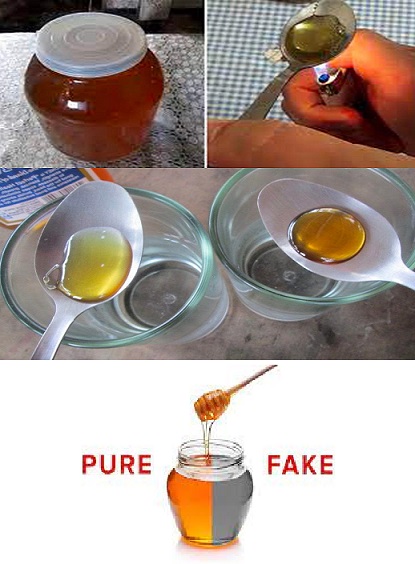
Here are the key differences in honey’s properties that can help distinguish between real and fake honey:
Test Pure Honey Adulterated Honey
Viscosity Sticks without dripping when rubbed between fingers Sticky due to additional sweeteners
Thickness Thick, slowly moves from one side of the jar to the other Not thick, easily flows
Taste Flavor dissipates within minutes (Note: Heating and cooling can change the taste) The added sugar prolongs the flavor
Smell Fragrant No smell or sour odor
Heat Effect Caramelizes quickly without foaming Bubbles, foams, and does not caramelize
Dissolution Does not dissolve easily in water, settles at the bottom, and dissolves slowly when stirred Dissolves in water forming threads, resulting in a cloudy solution
Flame Test A match ignites easily when dipped in honey Matches do not ignite easily due to moisture in adulterated honey
Bread Test Hardens on a bread slice within minutes Moistens and hydrates the bread slice due to water content
Absorption Test Does not soak into paper towels, leaves no mark on white cloth Soaks into paper towels, leaves marks on white cloth
Impurities Contains impurities due to the presence of pollen Lacks impurities
Knowing these differences will help you appreciate and utilize honey’s full benefits while avoiding adulterated products.”
This revised version provides a clear and structured guide to identifying pure honey, making it perfect for readers seeking practical and reliable methods to ensure the quality of their honey.

